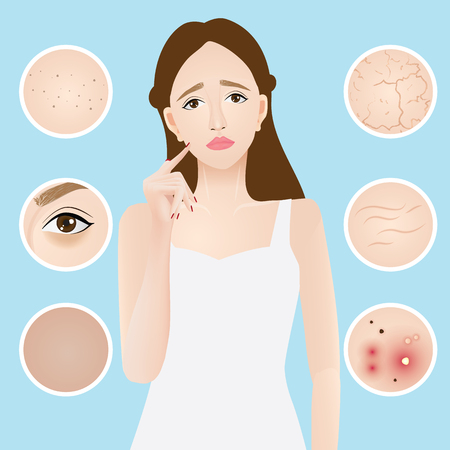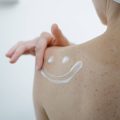1. Understanding Retinoids and Acids in Medical-Grade Skincare
Retinoids and exfoliating acids have become foundational elements in advanced skincare, especially when sourced from medical-grade lines. These compounds, widely endorsed by UK dermatologists, are valued for their transformative effects on skin health and appearance. Retinoids, derivatives of vitamin A, function by accelerating cell turnover and stimulating collagen production—mechanisms proven to reduce fine lines, acne, and pigmentation. Exfoliating acids, such as alpha-hydroxy acids (AHAs) and beta-hydroxy acids (BHAs), dissolve dead skin cells, unclog pores, and promote a brighter complexion.
Medical-grade skincare formulations set themselves apart through higher concentrations of active ingredients and rigorous clinical testing aligned with NHS and British Association of Dermatologists guidelines. Unlike over-the-counter products, these professional-grade options are designed to deliver measurable results under medical supervision, ensuring enhanced efficacy with a focus on safety. The science underpinning these actives demonstrates their ability to penetrate deeper layers of the epidermis, driving changes at a cellular level that cosmetic formulations rarely achieve.
Choosing medical-grade retinoids or acids means embracing evidence-based skincare that meets stringent UK regulatory standards. With proper guidance and an understanding of how these ingredients interact with individual skin types and concerns, users can harness their benefits while minimising potential side effects—a core principle in contemporary British dermatological practice.
2. Consulting Qualified Professionals in the UK
Incorporating retinoids and acids from medical-grade skincare lines demands a precise and evidence-based approach, particularly within the UK’s regulated clinical environment. It is essential to seek tailored advice from qualified British dermatologists or skin specialists before introducing potent actives into your regimen. British clinicians are well-versed in evaluating individual skin types, underlying conditions, and sensitivities that may impact how your skin responds to these ingredients.
The National Health Service (NHS) and private dermatology clinics across the UK offer comprehensive consultations that assess not only your current skincare routine but also any pre-existing conditions such as rosacea, eczema, or acne. This bespoke approach minimises adverse reactions and ensures you benefit fully from high-potency actives while maintaining skin health.
Benefits of Consulting UK Skin Professionals
| Aspect | UK Clinical Approach | Benefit to Patient |
|---|---|---|
| Initial Assessment | Detailed history-taking and skin analysis | Personalised recommendations based on individual needs |
| Product Selection | Preference for regulated, evidence-backed formulations | Minimises risk of irritation or misuse |
| Ongoing Monitoring | Scheduled follow-ups to track progress and adapt regimen | Early detection of side effects, ensuring optimal results |
| Integration with NHS Care | Ability to coordinate with other medical treatments if necessary | Holistic care that considers overall health status |
The Value of Professional Guidance in the UK Context
The UK’s robust regulatory standards for medical-grade skincare mean that professional guidance is not just recommended—it is often required for prescription-strength products. By consulting with certified practitioners, individuals can safely navigate the complexities of retinoids and acids while aligning their routine with the latest clinical protocols. This mitigates unnecessary risks and supports long-term skin health, reflecting the best practices endorsed by British dermatological associations.

3. Patch Testing and Gradual Introduction
Before introducing any retinoid or acid from a medical-grade skincare line, it is imperative to conduct a patch test—especially for those with sensitive or reactive skin, which is common among individuals in the UK due to environmental factors such as fluctuating weather and high humidity. To begin, apply a small amount of the product on a discreet area, such as behind the ear or on the inner forearm. Cover the area and leave for 24 hours without washing it off. During this period, closely monitor for any signs of irritation, redness, swelling, or itching.
Stepwise Approach for Integration
If no adverse reaction occurs during patch testing, proceed with a cautious and phased introduction into your routine. Start by applying the retinoid or acid product once a week in the evening, after cleansing but before moisturising. If your skin tolerates this well for two weeks, increase application to twice weekly. Continue to incrementally increase frequency every fortnight until you reach a maximum of every other night for retinoids or as recommended by the brand for acids.
Recommendations for Sensitive Skin Types
For those with particularly delicate skin—a trait prevalent in many British skin types—consider buffering the actives by mixing them with a bland moisturiser or applying moisturiser first as a protective barrier. Avoid using other potentially irritating ingredients (such as vitamin C serums or exfoliating scrubs) on nights when you use retinoids or acids.
Ongoing Monitoring
Throughout this process, observe your skin’s response vigilantly. Should any persistent redness, discomfort, or peeling occur, reduce frequency or pause usage altogether and consult with a dermatologist familiar with British skin profiles. Remember that patience is key; slow integration minimises risk while optimising long-term results.
4. Timing, Application, and Complementary Products
When introducing retinoids and acids from medical-grade skincare lines into your routine, particularly within the often cool, damp British climate, timing and method are pivotal for both efficacy and skin safety. Understanding how to layer these actives with other staple products found at UK chemists—such as Boots or Superdrug—can significantly reduce the risk of irritation while maximising results.
Optimal Timing for Application
Retinoids and most exfoliating acids (like glycolic or salicylic acid) are best applied in the evening. The reduced sun exposure overnight helps minimise sensitivity, which is crucial given the unpredictable British weather that still exposes skin to UV rays even on cloudy days. Acids should generally be used 1–3 times a week, while retinoids can be introduced gradually (start with twice weekly, increasing as tolerated).
Recommended Evening Routine Order
| Step | Product Example (UK Chemist) | Purpose |
|---|---|---|
| 1 | Gentle Cleanser (e.g., CeraVe Hydrating Cleanser) | Removes impurities without stripping moisture |
| 2 | Toner (Alcohol-free, e.g., Simple Soothing Toner) | Prepares skin and balances pH |
| 3 | Chemical Exfoliant (if using; e.g., Nip+Fab Glycolic Fix Pads) | Dissolves dead skin cells; use only on non-retinoid nights |
| 4 | Retinoid (e.g., Medik8 Crystal Retinal or prescription options) | Promotes cell turnover and collagen production; apply after toner or directly onto dry skin |
| 5 | Mild Moisturiser (e.g., Aveeno Calm + Restore Oat Gel Moisturiser) | Soothes and hydrates; helps buffer potential irritation from actives |
| 6 (AM only) | Sunscreen (e.g., La Roche-Posay Anthelios SPF 50+) | Essential daily protection; always use the following morning after actives |
Techniques for Layering Actives Safely in a UK Climate
- The “Sandwich” Method: For those with sensitive or drier skin types—common in Britain’s colder months—apply a thin layer of moisturiser before and after your retinoid to buffer potency.
- Avoid Combining: Never use strong acids and retinoids in the same session to prevent excessive irritation or barrier compromise. Alternate nights for each active is recommended.
- Pace Introduction: Introduce one new active at a time over several weeks. Monitor for redness or flaking, especially as central heating or wind exposure increases skin sensitivity.
Complementary Products Widely Available in UK Chemists
- Ceramide-rich moisturisers: Help reinforce the skin barrier when using potent actives.
- Scent-free hydrating serums: Hyaluronic acid serums (e.g., The Ordinary Hyaluronic Acid 2% + B5) pair well under moisturisers for extra hydration.
- Mild cleansers: Non-foaming formulas are gentler post-active application.
Cultural Considerations: Adapting to British Lifestyles
The British lifestyle—characterised by frequent outdoor activities regardless of weather—makes consistent sunscreen use non-negotiable year-round. Furthermore, busy urban routines may prompt individuals to seek multi-use products from local chemists; ensure these do not contain additional actives that could conflict with your targeted treatments.
A disciplined approach to layering, combined with awareness of product availability and climate nuances, will help you safely harness the benefits of medical-grade retinoids and acids within any UK skincare regimen.
5. Avoiding Common Mistakes and Adverse Reactions
When introducing retinoids and acids from medical-grade skincare lines, it’s crucial to navigate potential pitfalls that could compromise your results or skin health. Many UK customers unknowingly fall into common traps such as overuse, inappropriate layering, or neglecting essential aftercare. According to Dr Emma Wedgeworth, a London-based consultant dermatologist, “The most frequent issue I see is patients using too many active ingredients at once, leading to unnecessary irritation.”
Over-application and Frequency
One of the primary mistakes is applying products more frequently than advised. Medical-grade actives are potent; using them daily from the outset can overwhelm your skin barrier. Instead, experts recommend starting with alternate-day application and gradually increasing as tolerance builds—especially relevant for those adjusting to the unpredictable British climate which can exacerbate dryness or sensitivity.
Incorrect Product Layering
Layering acids and retinoids incorrectly can increase the risk of adverse reactions. For UK consumers who enjoy multi-step routines, Dr Wedgeworth suggests: “Always apply retinoids on clean, dry skin in the evening, and avoid layering with strong acids or exfoliants on the same night.” This prevents cumulative irritation and allows each ingredient to work effectively.
Ignoring Sun Protection
Another key pitfall is overlooking daily sun protection. Retinoids and acids heighten photosensitivity—even on typically cloudy UK days. Dermatologists across Britain stress that broad-spectrum SPF 30 or higher is non-negotiable when using these actives. Failing to do so not only increases risk of pigmentation but also undermines long-term skin health goals.
Poor Management of Irritation
If you experience redness, peeling, or stinging, do not simply ‘push through’. Instead, pause active use and introduce gentle moisturisers rich in ceramides or hyaluronic acid to restore balance. Once symptoms subside, reintroduce actives slowly. Consulting a pharmacist or NHS-affiliated skincare professional for tailored advice is highly recommended if irritation persists.
Summary Strategies for UK Users
- Introduce one active at a time
- Start slow—alternate nights initially
- Avoid combining multiple potent actives simultaneously
- Apply SPF religiously, regardless of weather
- Seek local expert guidance if in doubt
By staying vigilant against these common errors and following expert-backed strategies, British users can safely harness the benefits of medical-grade retinoids and acids while minimising adverse reactions.
6. Sun Protection and Seasonal Adjustments
One of the most critical elements when using retinoids and acids from medical-grade skincare lines is diligent sun protection. Retinoids and chemical exfoliants can increase your skin’s sensitivity to ultraviolet (UV) rays, making broad-spectrum SPF non-negotiable, even during the famously overcast British weather. It’s essential to select a sunscreen that offers protection against both UVA and UVB rays—look for products labelled as “broad-spectrum” with an SPF of at least 30. Given the UK’s climate, locals may underestimate sun exposure on cloudy days; however, up to 80% of UV rays can penetrate cloud cover, so daily application is imperative all year round.
Seasonal adjustments are equally important. During winter months in the UK, lower humidity and harsher winds can exacerbate dryness or irritation triggered by active ingredients. Switching to richer moisturisers or adding hydrating serums—readily available at chemists such as Boots or Superdrug—can help maintain skin barrier integrity. In contrast, summer calls for lighter formulations but continued vigilance with sun protection, especially during outdoor events like Wimbledon or weekend walks in Hyde Park.
For those living in different parts of the UK, regional weather variations should influence your regimen. Coastal areas such as Cornwall may experience higher humidity, while northern regions like Scotland often contend with colder, windier conditions. Tailor your routine accordingly by layering hydrating products under your SPF in drier climates and choosing mattifying sunscreens if you’re prone to oiliness in humid environments.
Finally, make use of locally available products that cater specifically to British skin concerns—many UK brands offer fragrance-free, dermatologist-tested formulations ideal for sensitive or reactive skin types. Prioritise consistency: apply sunscreen every morning after your treatment products and reapply throughout the day if you’re outdoors. By respecting the interplay between potent actives, diligent sun protection, and seasonal shifts unique to the UK, you can optimise results from your medical-grade skincare while safeguarding your skin’s long-term health.


